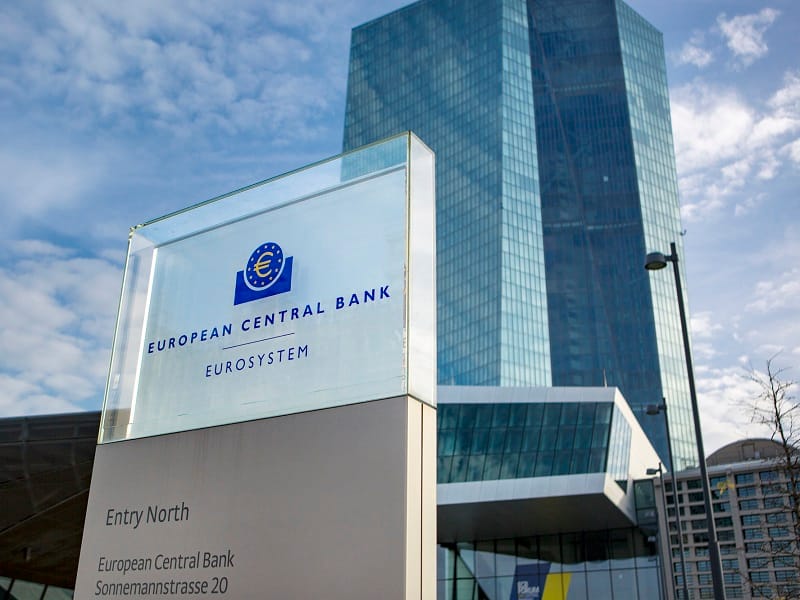European Commission responds to ECB’s concerns about stablecoin risks

ntroduction
In Europe, the tug-of-war over stablecoin regulation has highlighted two differing perspectives on risk. On one side is the European Central Bank (ECB), which has voiced strong concerns about stablecoins – privately issued digital currencies pegged to assets like the euro or dollar. The ECB worries that if stablecoins become widely used, they could undermine financial stability or even the effectiveness of monetary policy. On the other side stands the European Commission, the EU’s executive arm, which appears more sanguine about these risks. In a recent exchange, the Commission responded to the ECB’s warnings with a reassuring message: existing rules can manage the dangers, and there’s no need to slam the brakes on stablecoin growth under the newly enacted regulations. (For context, stablecoins play a critical role in crypto trading and decentralized finance (DeFi) by providing price-stable assets that bridge traditional money and blockchain systems.)
ECB’s Warning on Stablecoins
ECB officials – including President Christine Lagarde – have publicly cautioned that stablecoins might pose bank-run scenarios and other systemic threats. In April, the ECB circulated a “non-paper” (an informal discussion document) outlining a hypothetical problem: imagine a stablecoin that is issued jointly in the EU and another country (for example, a U.S. company offering a euro-pegged coin to users in both Europe and the States). The ECB argued this could weaken safeguards in the EU’s forthcoming crypto rules. Why? Because if many people outside Europe hold such a coin, a sudden loss of confidence might trigger mass redemptions (a run on the stablecoin) that EU regulators couldn’t fully control. European issuers might not hold enough reserves under EU supervision to cover a wave of foreign withdrawal requests. In essence, the central bankers feared a stablecoin could create a cross-border bank run, with money rushing out in a panic and European authorities left holding the bag.
Additionally, the ECB warned that allowing “multi-issuance” of stablecoins (where an issuer operates in both EU and non-EU jurisdictions) might let companies bypass key protections of the EU’s new crypto rulebook, known as MiCA (Markets in Crypto-Assets). MiCA includes requirements like maintaining sufficient reserves and liquidity for stablecoin issuers. The ECB’s worry was that an issuer could register in a non-EU country with looser rules and still serve EU customers, thus sidestepping the stricter European standards. All these cautions essentially urged the European Commission to take a hard line: restrict or compartmentalize foreign-issued stablecoins so they don’t threaten EU financial stability or dilute the impact of a future digital euro.
The Commission’s Reassuring Response
The European Commission, however, struck a noticeably softer tone. In June, it publicly downplayed the likelihood of a stablecoin-triggered crisis, directly countering the ECB’s scenario. A Commission spokesperson stated that a run on a jointly issued token is “highly unlikely” – and even if one occurred, most redemptions by non-EU holders would happen outside Europe (for example, in the U.S.), since that’s where the majority of such stablecoins’ reserves tend to be held. In other words, the Commission believes that the worst-case scenario painted by the ECB is not only improbable, but also not as dangerous to Europe as feared, because the exposure would largely lie abroad.
To back up its stance, the Commission released an in-depth analysis titled “Stablecoins and digital euro: friends or foes of European monetary policy?”. The study concluded that significant legal and regulatory barriers make it hard for foreign stablecoins to gain major traction in the euro area. It pointed out that MiCA’s regulations themselves have already discouraged big non-EU players from targeting Europe. Case in point: Tether – issuer of USDT, the world’s largest stablecoin by market capitalization – has decided not to seek a license under MiCA due to requirements like keeping at least 60% of reserves in European banks. (Tether’s executives have argued that parking such a large chunk of assets in EU bank accounts could be counterproductive and risky, so they opted to avoid European registration.) The Commission’s implication is that if an issuer isn’t willing to meet EU standards, they might stay out of the market – thereby limiting EU consumers’ exposure to potentially unstable foreign coins.
Moreover, the Commission suggested that even if foreign stablecoins operate in the EU, policy tools exist to manage the risks. For instance, regulators could require issuers to “rebalance” their reserve holdings so that the portion of coins held by EU users is matched by reserves located within the EU. This would ensure that European authorities have oversight and access to sufficient collateral if redemptions surge. In the Commission’s view, measures like these mean the sky isn’t falling: a cross-border stablecoin might introduce some complexity, but it can be handled within the MiCA framework without needing drastic new restrictions.
Implications for the Crypto Industry
The Commission’s softer stance came as welcome news to the crypto industry in Europe. Many blockchain entrepreneurs and firms saw the ECB’s earlier warnings as a sign of potentially heavy-handed limitations on stablecoins. By contrast, the Commission’s approach suggests a more open environment where regulated stablecoins (even those with international footprints) can operate as long as they play by MiCA’s rules. Juan Ignacio Ibañez, general secretary of the MiCA Crypto Alliance, noted that the Commission’s position essentially allows a stablecoin like Circle’s USDC to remain one unified product across jurisdictions, rather than splitting into “USDC-EU” and “USDC-US” versions. This fungible treatment means global stablecoin issuers don’t have to fragment their liquidity or complicate their operations to satisfy Europe.
For investors and users, this could translate into greater choice and convenience. A euro-area user might, for example, continue using the same USD-denominated stablecoin as a U.S. user, with confidence that it’s properly backed and redeemable on demand. The value of a stablecoin lies in its seamless cross-border usability – imagine if a digital dollar couldn’t move freely between countries; it would lose much of its appeal. The Commission appears to recognize this, and by not enforcing strict jurisdictional silos, it preserves the fundamental feature that makes stablecoins useful in the first place.
On the flip side, the ECB’s concerns haven’t disappeared entirely. The central bank will likely continue advocating caution, especially as the digital euro project progresses. From the ECB’s perspective, a widely used private stablecoin might compete with a central bank digital currency or reduce the bank’s control over money in circulation. However, the balance struck in the EU’s regulatory approach – encouraging innovation under supervision – indicates that outright hostility to stablecoins is off the table. European lawmakers have already passed MiCA into law (set to fully apply by 2024), making the rules of the road clear. As long as issuers are transparent, adequately capitalized, and abide by investor protection rules, the Commission seems comfortable that stablecoins can coexist with traditional finance in Europe.
Conclusion
The dialogue between the ECB and the European Commission over stablecoin risks showcases the tension between prudence and innovation in financial regulation. The ECB leaned toward a precautionary principle, imagining worst-case scenarios where a stablecoin run could strain Europe’s financial system. The Commission, armed with data and the new MiCA regulations, responded with confidence that those scenarios can be avoided or mitigated without stifling the industry.
For the crypto community, the Commission’s response is a promising sign that Europe aims to be a stablecoin-friendly jurisdiction – provided companies follow robust rules. It’s a reminder that regulation doesn’t necessarily mean repression; in this case, it can provide a framework that allows new digital money forms to flourish responsibly. As MiCA comes into effect, the real-world outcomes will be watched closely. If the Commission is correct, Europe might enjoy the benefits of stablecoins (like efficient payments and fintech innovation) while keeping risks in check. And if the ECB’s fears start to materialize, regulators have signaled they’re ready to act.
In the end, Europe’s handling of stablecoin concerns could strike a balance that other regions seek to emulate: encouraging trust in digital assets without sacrificing financial stability. The conversation between central bankers and policymakers will undoubtedly continue, but for now, the message to stablecoin issuers and users is cautiously optimistic – the EU isn’t slamming the door on stablecoins, it’s showing them how to walk in safely.



Comments ()